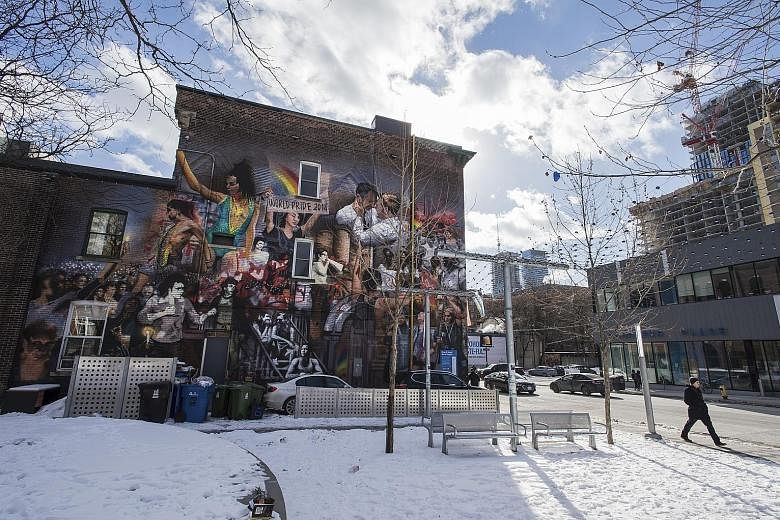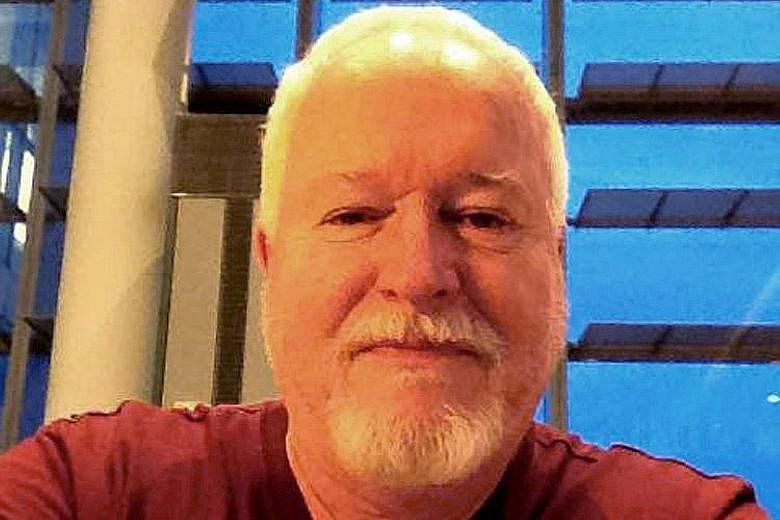TORONTO • For years, members of Toronto's gay community warned that there was a serial killer on the loose, that vulnerable men were going missing, that the streets were not safe. They were right.
On Friday, Bruce McArthur, a 67-year-old landscaper and former mall Santa Claus, was sentenced to life in prison with no chance of parole for 25 years on eight counts of first-degree murder, ending a trial that shocked a city - and a country - that likes to see itself as inclusive and safe.
McArthur was accused of killing and dismembering eight men between 2010 and 2017, hiding seven of the corpses in planters and the eighth in a ravine.
Ontario Superior Court Justice John McMahon said McArthur would likely never be released. "The ability to decapitate, dismember his victims and do it repeatedly, is pure evil," he said.
At a sentencing hearing that ended on Tuesday, Canadians heard how McArthur lured and murdered men he met in Toronto's Gay Village, then posed corpses in costumes, keeping pictures of each victim in labelled digital folders.
They learnt that he was stopped when police raided his home, finding a man tied to a bed. He was a potential ninth victim, the court heard, and McArthur had a folder waiting.
In a city that prides itself on being gay-friendly and welcoming to new Canadians, McArthur sought out men marginalised by their sexuality, ethnicity, immigration status or poverty. Most of his victims were refugees or immigrants. Several struggled with substance abuse. Some had not revealed that they were gay.
The details of the case are so brutal, the crimes so depraved, that the headlines at times obscured the fact that eight men - Mr Skandaraj Navaratnam, Mr Majeed Kayhan, Mr Abdulbasir Faizi, Mr Soroush Mahmudi, Mr Kirushna Kumar Kanagaratnam, Mr Dean Lisowick, Mr Selim Esen and Mr Andrew Kinsman - had been killed.
Now, with the trial over, advocates want to put the focus back on why so many died before police cracked the case. Some argue that the police response was slowed by homophobia and racism.
Asked about allegations of bias, Ms Meaghan Gray, a spokesman for the Toronto police, said the force launched two investigations - Project Houston and Project Prism - "to do everything possible" to locate the missing men. "We will continue to do what we can to support the community and look for opportunities to improve our relationship," she said in an e-mail.
Mr Haran Vijayanathan, executive director of the South Asian Alliance for Aids Prevention and a long-time advocate for the victims and their families, praised the team of detectives that caught McArthur, but expressed anger that it seemed to take the murder of a white man, Mr Kinsman, to spur action.
"This is a real wake-up call for Canada," Mr Vijayanathan said.
Toronto's Gay Village is a couple of blocks of shops, restaurants and bars in the heart of the city. It was there, in the early 1980s, that police raids on bathhouses spurred Canada's gay rights movement.
McArthur was a regular in the area. Mr Kyle Rae, Toronto's first openly gay city councillor, recalled seeing him around. "He was a fixture," he said.
The first victim to go missing was Mr Navaratnam, a refugee from Sri Lanka. He was last seen leaving a village bar in September 2010. In December that year, Mr Faizi, originally from Afghanistan, vanished. By 2012, Mr Kayhan, also an immigrant from Afghanistan, was gone.
The disappearances sparked an investigation called Project Houston, and officers interviewed McArthur. Eventually, the effort was disbanded. The killing resumed.
In 2016, McArthur was interviewed a second time after a man claimed McArthur had tried to choke him. Detectives did not press charges. The officer who handled that case, Sergeant Paul Gauthier, now faces professional misconduct charges.
The break in the case came in June 2017, when Mr Kinsman, a white, Canadian-born activist with deep ties to the community, went missing. By July, Project Prism was launched to look into his disappearance and another recent case.
Many in the community say they were convinced a serial killer was on the loose, an idea the police dismissed about a month before McArthur was caught.
"We follow the evidence, and the evidence is telling us that that's not the case right now," Toronto Police Chief Mark Saunders told reporters in December 2017.
Mr Rae, the former city councillor, said the resistance to believing there could be a serial killer reflected the city's need to believe it was safe. "This is part of the culture of Toronto and Canada. We are 'Toronto the good'. That can't happen here. But this type of murder can happen here," he said.
WASHINGTON POST


